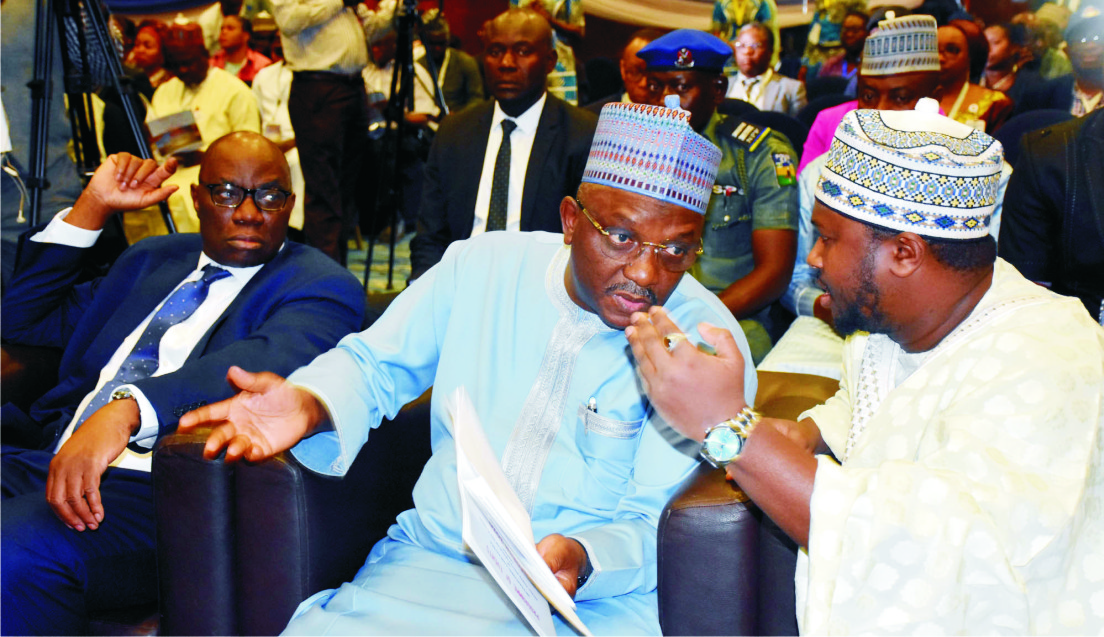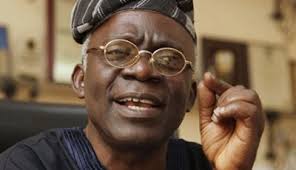Oil & Energy
Why We Are Disconnecting Defaulting Customers – PHED

The Port Harcourt Electricity Distribution Company, (PHED), has explained why it has embarked on mass disconnection of defaulting customers in Akwa Ibom, Bayelsa, Cross River and Rivers States.
In a release made available to newsmen in Port Harcourt, the Manager, Corporate Communications of the company, John Onyi, said the mass disconnection ‘ ‘Operation Storm’ was initiated by the management in order to sustain PHED and the power sector from imminent collapse.
He said that the huge debt owed the company amounting to over N166.012billion as at October 2019 was no longer tolerable, hence the need to recover it at all cost.
The exercise according to him, will continue until every kobo is recovered for energy consumed.
“Every defaulting customer in our franchise area will be visited and disconnected by dedicated Task Force teams on constant patrol “, Onyi said.
The spokesman said he could not understand why the defaulting customers have seen electricity as a social service, adding that the misconception should be changed.
He however, noted that help desk has been created across PHED offices to resolve and reconcile any contentious bill.
The statement urged customers with disputable bill to avail themselves the opportunity by visiting any PHED office closest to them for on the spot bill reconciliation.
PHED also assured its commitment to improve on service delivery to its customers but, emphasised the need for the gesture to be complemented through payment of electricity bill.
Oil & Energy
Tight Now, Loose Later: Oil Futures Flash Warning
Last week, OPEC+ announced it will once again accelerate the pace of unwinding of production cuts, with output targets for June increasing by 411,000 barrels per day, equivalent to three monthly increments.
This follows a similar move in April, with the organization appearing willing to stay the course amid low oil prices and fears of weakening demand.
We reported that global crude inventories remain low enough, thus giving OPEC+ a window to scale back its voluntary cuts until the market surplus finally arrives.
Saudi Arabia appears intent on “punishing” OPEC+ rascals such as Kazakhstan and Iran for repeatedly violating their quotas.
Commodity analysts at Standard Chartered have reported that the latest OPEC survey of secondary sources reveals that Kazakhstan’s crude oil output clocked in at 1.852 mb/d in March, 384 kb/d above its OPEC+ quota.
Further, the country also failed to keep its promise to cut 38 kb/d in compensation for overproduction in March, bringing its total overproduction to 422 kb/d.
The same scenario is expected to unfold in the coming months. Kazakhstan produced 240 kb/d more y/y in March, a sharp contrast from the other eight OPEC+ members who produced a combined 612 kb/d less.
And now, the oil futures markets are sending a dire warning that oil bulls could find themselves in trouble quite soon due to a combination of the OPEC+ output hike and Trump’s tariffs.
Oil futures curve has formed a rare “smile” shape, a structure Morgan Stanley says was last seen briefly in February 2020 just before the infamous oil price crash.
On Wednesday, Brent futures’ July contract was trading at a premium of 74 cents to the October contract, a market structure known as backwardation, foreshadowing immediate tight supply.
However, prompt prices from November have formed a contango, with forward prices flipping to a discount, indicating oversupply as traders predict Trump’s tariffs will eventually weaken oil demand. Having backwardation and contango together leads to the rare “smile” shaped curve.
According to the latest available data by the International Energy Agency (IEA), global oil inventories stood at 7.647 billion barrels in February, down from 7.709 billion barrels for last year’s corresponding period and close to the bottom of their historical five-year range.
Meanwhile, refiners’ appetite for crude is climbing ahead of the peak driving season in July and August, “Refinery maintenance in the Atlantic basin will start to taper off, increasing oil demand (for refining)… Summer driving should provide some support,” BNP Paribas analyst told Reuters.
Global oil demand is expected to rise by 1.3 million barrels per day in the third quarter of the current year, up from an average of 104.51 million bpd in the second quarter, the IEA has predicted.
The 1 million bpd output increases announced by OPEC+ so far, coupled with another 400 kb/d increase in July, almost matches the predicted demand increase, implying oil markets will not face a surplus till late in the year.
Meanwhile, oil prices jumped in Thursday’s session after the Trump administration announced it has struck a trade deal with the UK. Brent crude for July delivery was up 2.7% to trade at $62.75/bbl at 12.50 pm ET while WTI crude contract for June delivery added 3.0% to change hands at $59.86 per barrel. However, terms of the deal appear to fall well short of the “comprehensive” package Trump earlier touted.
According to Trump, UK Prime Minister, Keir Starmer, will further reduce non-tariff barriers and fast-track U.S. goods into his country.
Meanwhile, another solid week of jobless claims underscored the Federal Reserve’s ongoing unwillingness to cut rates. U.S. jobless claims fell 13,000 to 228,000 for the period ending on May 3.
Continued claims, however, clocked in at just over 1.9 million, near the highest levels since 2021, suggesting workers are still finding it difficult to secure new jobs as the economy stalls.
That said, commodity analysts at Standard Chartered have predicted that path of least resistance for oil prices is lower in the coming months, with oil prices to remain low before beginning a gradual recovery later in the year as U.S. oil output declines.
StanChart, however, says there’s some technical support in the short-term, with fundamentals remaining fairly positive. Recently, StanChart cut its 2025 oil price forecast to $61/bbl from $76 and also lowered its 2026 forecast to USD 78/bbl from $85 citing Trump’s tariffs.
By: Alex Kimani
Oil & Energy
ExxonMobil Earmarks $1.5b For Nigeria’s Deepwater Oil Fields
In a move to reinforce confidence in the nation’s upstream potential, ExxonMobil has affirmed its long-term commitment to the oil and gas sector with a planned $1.5 billion investment in deepwater exploration and development projects.
Country Managing Director, Shane Harris, disclosed this during a courtesy visit to the Commission Chief Executive (CCE) of the Nigerian Upstream Petroleum Regulatory Commission (NUPRC), Engr. Gbenga Komolafe.
A statement on the NUPRC’s website revealed that the investment, planned to be executed between Q2 2025 and 2027, would focus primarily on revitalizing production at the Usan deepwater oil field.
The oil major hinted that a Final Investment Decision (FID) is expected in late Q3 2025, pending the final approval of the Field Development Plan (FDP), along with internal and partner funding approvals.
In addition to the Usan field, ExxonMobil also revealed intentions to accelerate development activities in other key deepwater assets, including the Owowo and Erha fields.
These developments are part of a broader strategy to strengthen its operational footprint in Nigeria and support the country’s drive for increased production.
Speaking during the visit, Harris stated that the planned capital expenditure underscored ExxonMobil’s belief in the long-term viability of Nigeria’s upstream sector and its strategic importance in the global energy landscape.
Harris, who expressed ExxonMobil’s support for NUPRC’s “Project 1 Million Barrels” initiative, which aims to boost Nigeria’s crude oil production capacity to 2.4 million barrels per day in the medium term, stressed the need for strategic collaboration between operators and regulators in achieving this ambitious target.
He further pledged to use the platform to foster stronger collaboration between industry players and the NUPRC with a focus on addressing regulatory challenges and unlocking further investment opportunities in the sector.
Responding to the development, the NUPRC boss, Engr. Gbenga Komolafe, welcomed the announcement, describing ExxonMobil’s renewed commitment as timely and crucial for Nigeria’s upstream growth.
Oil & Energy
Minister Tasks NNPCL On Oil Output Increase By Year End
Minister of State for Petroleum Resources (Oil), Heineken Lokpobiri, has called on the Nigerian National Petroleum Company Limited (NNPCL) to boost oil production significantly by the end of 2025.
Lokpobiri made the call during an interview with Energy Editors at the Africa Energy Forum (AEF) in Houston, Texas, United States.
Emphasizing the need for accelerated growth in the nation’s oil output, Lokpobiri said he had increased oil production target from President Bola Tinubu’s initial goal of 2 million barrels per day (bpd) to 2.5 million bpd.
According to a statement, “The Federal Government on Wednesday directed the management of the Nigerian National Petroleum Company Ltd. (NNPCL) to increase oil production beyond current levels by the end of the year.
“Although President Bola Tinubu had initially tasked the NNPCL with ramping up production to 2 million barrels per day (bpd) but later increased the target to 2.5 million bpd”.
He insisted that the new target is achievable, noting that the nation had previously reached that level during the COVID-19 pandemic, despite low investment.
Lokpobiri explained that the “Drill or Drop” policy under the Petroleum Industry Act (PIA) required new drilling to replenish reserves for every oil extraction, using underground surveys.
He urged global investors to take advantage of Nigeria’s improved regulatory environment and competitive fiscal terms, describing the country as a top destination for energy investment.
-

 News7 hours ago
News7 hours agoSERAP Gives CBN Seven Days Ultimatum To Disclose Allocation Disbursements To 774 LGAs
-
Editorial14 mins ago
End The Senseless Killings
-

 Sports6 hours ago
Sports6 hours agoTeam Sleeps At Facility After Attack
-
Business6 mins ago
Nigeria’s Debt Servicing Gulped N696bn In Jan – CBN
-

 News42 mins ago
News42 mins agoTroops Eliminate Boko Haram Fighters, Capture Weapons In Sambisa Offensive
-

 News7 hours ago
News7 hours agoFalana Demands Probe Of Alleged Diversion Of $3.4bn IMF Loan
-
Politics14 mins ago
Youth Group Warns Against Politicising Governance In Zamfara
-

 Sports6 hours ago
Sports6 hours ago“Remo Ladies will win every NWFL Super Six match”

